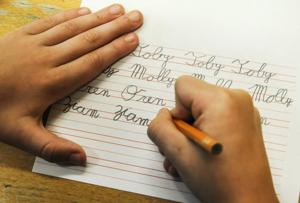The Nantucket Historical Association has a website where you can sign up to do free transcribing for them. They have a huge manuscript collection, written in old-timey cursive by seagoing captains (and some logs written by their wives) but as you can imagine, collections that begin in 1659 can be a little difficult to parse. As of yet, I haven’t been able to settle down into what I think will be my next full-time unpaid job, but the idea fascinates me.
I’m not sure exactly when they stopped teaching cursive writing in the school system, but I do know both of my sons have signed their names the same way since kindergarten. When I skipped Grade 3, my towering fear was that I’d missed out on learning how to write instead of print. My new best friend Kathy McBride taught me how to do it, which means I wrote exactly the same way as Kathy McBride.

I’ve noticed some requests on social media for assistance in reading an “old” document someone has found. At first, there were a lot of things written in another language; now, many of the requests are simply because someone wrote it in cursive. I kept my bossy judgment to myself but I remained amazed that kids were looking at standard cursive writing as if it were hieroglyphics on a cave wall.
I used to go to great lengths when I was learning spycraft as an eight-year-old. I would invent complicated codes along the lines of 1=A, 2=B and 3=C before carefully using a toothpick to write out my message in lemon juice on a piece o.























